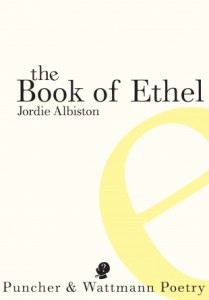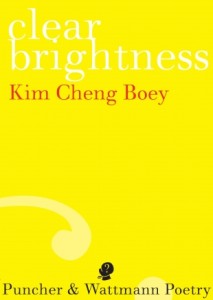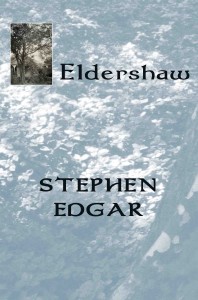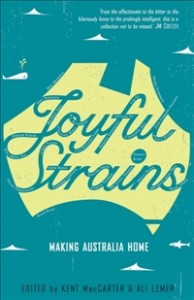
Hotel Hyperion
By Lisa Gorton
Giramondo, May 2013, 50pp
ISBN 9781922146274
In her second collection of poems, Hotel Hyperion, Lisa Gorton shows us how memory is “a place less like place than like memory itself” (“Dreams and Artefacts”): a surface, which we may see through but not penetrate. These poems are concerned with the melancholy experience of spatial and temporal distances, and how these reflect the distance between one life—one self—and another.
It’s a concern that Gorton established in her first collection, Press Release, and that she has critically explored in her work on John Donne. In her award-winning essay, “John Donne’s Use of Space”, Gorton describes the metaphysical poet’s selection of “a master-image upon which he maps many, various, and sometimes contradictory ideas.” It’s useful to consider to what extent this is also a description of Gorton’s poetics, particularly the way they are plotted and polished in Hotel Hyperion.
The “master-image” of Hotel Hyperion takes multiple shapes—telescope, diorama, Snow Dome, spacesuit, crystal, house—which the poet treats as one type, “things closed in glass” (“Room and Bell”). Upon these, Gorton maps her
essay on memory. Her imagery tingles with the chill of synthetic and airtight spaces, their bloodless particles and unearthly quiet:
Patiently, ticket by ticket, a soft-stepped crowd
advances into the mimic ships hull half-
sailed out of the foyer wall, as if advancing into
somebody else’s dream —
the interior, windowless, where perspex cases bear,
each to its single light, small relics —
(“Dreams and Artefacts”)
We imagine the speaker’s voice ringing in sparse rooms, between echoing footsteps; and always through this book, the muffled white noise of rain outside:
long rain breaking itself onto the footpath,
breaking easily into the surface of itself
like a dream without emblems, an in-drawn shine.
Overhead, clouds build and ruin imaginary cities,
slo-mo historical epics with the sound down,
playing to no one.
(“Dreams and Artefacts”)
A host of speakers—visitors, mothers, children, guardians—inhabits these spaces in Hotel Hyperion. The book’s few domestic scenarios are a red herring, as even homely settings become uncanny. For example, In the sequence “Room and Bell” (which might be the book’s finest section), Gorton gradually makes the comforting imagery of a childhood bedroom transparent: revealed as the deep memory of an adult speaker who, as a child, was already haunted in this very space by a spectre of her grown self. This revelation is amplified to disturbing proportions in the poem “Screen, Memory”, in which the speaker, who has come to accept the sealed interior of a space ship as home, miscalls a memory of bushwalking. In fact, she has received the “memory” from images screened onboard the ship.
In examining memory, Gorton is not simply concerned with the act of remembrance; she is interested in how memory reveals the very quality of being. In “Room and Bell”, experience is haunted or doubled by the shadow of our own consciousness. In “Screen, Memory”, as in all of the poems in Hotel Hyperion, the speaker is a witness and collector of reality—that is to say, the speaker is memory itself—for whom experience is refracted through the glass of other lives, other beings.
Beneath her book’s master-images, Gorton extends metaphors of intricacy and reversion. These become self-generating through the poet’s structural techniques of repetition, reiteration and variation. Perhaps the book’s most striking instance of such technique is its reprise of “Press Release”, the titular poem of Gorton’s previous collection: here reprinted as the seed of a new titular sequence, “The Hotel Hyperion”. As well as the rain already mentioned, lesser examples of returning meta-images include: moving clouds; a miniaturised ship (through a telescope, in a bottle, in a Snow Dome); displayed relics; and Mantegna’s The Triumph of Caesar. Their return mimics mild amnesia, once again reflecting memory’s fallibility; and, at the same time their presence reminds us that coincidence is the poet’s deliberate and provocative art.
At the level of line and sequence, Hotel Hyperion itself becomes the prismatic object it describes. In this book Gorton has claimed the long line with a determination and consistency unprecedented in her work. It allows her to extend whole corridors of thought without pause:
In a Storm Glass crystals
with the exactness peculiar to foreboding make neural
flare shapes: ultrasound-
coloured threads cross-stitched with blank, as of sensation
excised and, here, preserved in light.
(“A Description of the Storm Glass and Brief Guide to its Use in Forecasting Weather”)
This new affect of breathlessness contrasts Gorton’s essayistic register and typically rhetorical tone. This disconcerting tension adds urgency and pitch to these poems, signaling their linkages whilst pulling the reader by the arm, down the cold and glassy passages of their imagery. Amplifying the long lines, multiplying those corridors into networks of association, Gorton makes extravagant use of parataxis. This effect is most notably built through her liberal use of the dash, which creates the appearance of delayed conclusion:
A solution of camphor sealed in glass, they mass,
weather by weather, crystalline forms that vary
with electric change in air, and make a trophy of their
ruin —
so the clear spirit, which held all yesterday grey-
shadowed light,
this morning raises its more precise hallucination —
Jamesian
treasury of scruples, or that more formal vaulting of
remorse —
(“A Description of the Storm Glass and Brief Guide to its Use in Forecasting Weather”)
The shape of these lines flirts with prose, but Gorton’s style is steeped in lyricism; even the prose paragraphs of “Room and Bell” are sprung with musical punctuation, pace and sound effect. In the above lines, Gorton interrupts the long breath with abrupt enjambment. Frequently, line breaks hang on words that might conventionally be considered weak hinges: “of their” and “vaulting of”, for instance. However, Gorton’s reasoning of these breaks is formally precise, bringing attention not so much to the end-word as to the one hung beneath. Those words take the weight of a whole line. They are like a tolling bell or a heart sinking: ruin, remorse.
These micro-structures are more broadly reproduced by the arrangement of the book’s contents. Read as a lyric essay, each of its five parts contains a sequence or suite. Each sequence or suite forms images realised in the next. In “The Hotel Hyperion”, this structure reflects the sequence’s narrative of human generations, its poems ordered episodically to represent the reliance of one life and civilization upon another. The book’s final section, an ekphrastic sequence about Mantegna’s painting, The Triumph of Caesar, culminates this structure: framed by a contemporary viewer, looking into to Mantegna’s Renaissance viewpoint, which looks into to the Roman—and so we have Western tradition seen down the barrel of art’s telescope.
It’s a structural conceit that echoes Gorton’s own reading of Donne, specifically her focus on how his:
… one image of a circle and its centre, and the arrangement of relations that it represents in spatial terms… takes its shape and meaning from the shape and meaning of space in the ‘closed cosmos,’ where space is arranged in concentric circles. Donne describes the cosmic arrangement as ‘natures nest of boxes: the heavens contain the earth; the earth, cities; cities, men. And all these are concentric…’ and contained by ‘all the vaults and circles of the severall spheres of heaven’ [sic].
Whereas Donne views the experience of “men” as being ultimately situated within the circle of God, Gorton’s focus turns in the opposite direction. In her poems, we see—briefly, behind us—cities; but her focus is on the human sphere; and, within its circle, the mind; and within that, art. In “The Triumph of Caesar” Gorton seems to be telling us that art’s quality is the same as memory. But, like Donne’s idea of space, her idea of art is not totally Platonic. She suggests that art’s mediated quality does not mean that it fails truth; rather, art makes a true extension of human being. Like the way the mind captures and stores experience, art represents intricately nested perspectives with blurry, scrubbed-out peripheries:
The picture is mostly of legs —
it shows the Triumph from a child’s viewpoint.
Soldiers and horses — so many, they crowd
perspective out. Only a few figures stand entire
at the boundary of the picture as if they would step
the next instant into that vast which is not there —
(“The Triumph of Caesar”)
This “mapping” of one horizon upon another is more complex than the single-point perspective claimed by Renaissance art. Indeed, according to Gorton’s viewer, the single-point perspective is already fallacious in Mantegna’s painting:
The pattern their legs make repeats
the pattern of lances, angles drawn against the clouds
like a working out of every possibility. Captured arms,
bulls crowned for sacrifice, prisoners, victories and
loads of coin, spears and catapults, colossal statues, elephants —
sights that replace each other, new and again
new, the way I remember highways from the back seat
of my parents’ car — fields stacked with light
which did not pass but poured through me —
(“The Triumph of Caesar”)
In another instance of return, this childhood anecdote is also the subject of a nearby poem, “Freeways”. As well as return or reversion, this gesture reveals a palimpsestic quality in Gorton’s writing, which draws our attention back to the act of making (poesis). In this way, she points to her own art of language and asks that we consider how we have inhabited the space of this book; how we have entered into its fictions and “perspective by perspective, into that vanishing point” (“The Triumph of Caesar”).
As an ekphrasis poem, “The Triumph of Caesar” isn’t particularly challenging—it largely follows the tradition of descriptive viewing (but for that lively intervention by the persona, above). Its reason for being is larger than itself, informed by and containing the conceit of the entire book. The poem performs this role capably enough—but then, as part of that conceit, it must.
Its absolute answerability to the intricate structure of the book might cause some readers to itch for escape. If Hotel Hyperion not only represents but resembles a “thing closed in glass”, does it cast light outwards, beyond its own bounds; or does it infinitely recede, “so self-consistent / its corridors turned into themselves” (“Screen, Memory”)? Do we, as in “A Description of the Storm Glass”, find ourselves posed by Gorton as “a reader, like the picture of a reader”?
The brevity (50pp) and self-contained unity of Hotel Hyperion resemble a chapbook. Unlike a longer and more various collection of poems, it may be read in one sitting, allowing intense engagement with its plotted images and structural dimensions. If Gorton’s poetic design locks out something, it might be the aberrant image; the unanswered question. Yearning for a flaw in its gorgeous glass layers, I feel the reader’s experience may be constrained by the poet’s fixed fidelity to one idea, so fully explored.
Gorton has observed of Donne that his “image of concentric circles” hosts not only complimentary ideas but also contradictions. Gorton comprehends her work so deeply and thoughtfully as a poet of ideas and as an editor, one wonders whether her mapping and re-mapping of this book’s idea has erased the possibility of contradiction; if there is any corner of this “house of images / where nothing is lost” (“Dreams and Artefacts”) that she has not fully remembered.
BONNY CASSIDY is a poet and critic living in Melbourne. Her first collection, Certain Fathoms (Puncher & Wattmann, 2012), was shortlisted for the WA Premier’s Book Awards. A new book is forthcoming from Giramondo in early 2014.




 Eldershaw
Eldershaw



